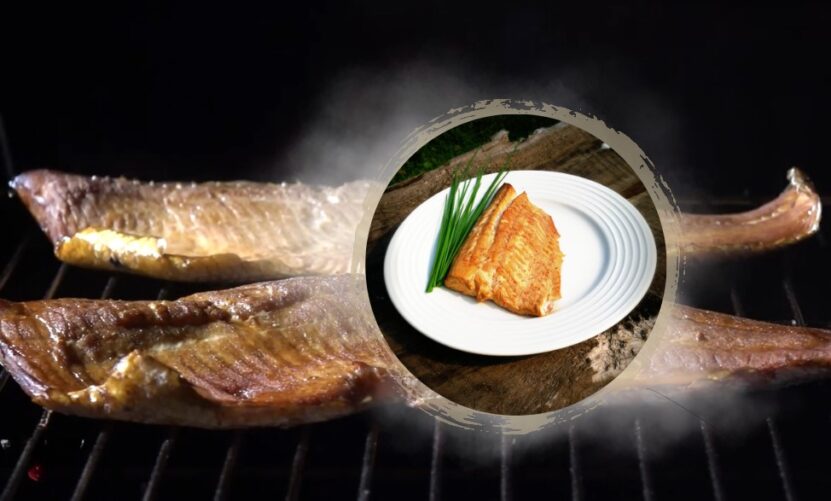Few dishes hold the power to transport your senses directly to the tranquil shores of a lake like a perfectly smoked whitefish does. As a seasoned chef who has devoted decades to exploring the art and science of smoking fish, I still vividly recall the summer I spent in the lakeside cabin, tinkering with my first smokehouse, allowing my creativity to run amok amidst the wafting smoke and the aromatic allure of freshly caught fish. Let’s talk about this delightful process and learn how to create this smoky masterpiece in your own backyard.
An Overview
Before we delve into the process, let’s understand what whitefish is, where it comes from, and why it’s a favored choice for smoking.
What is Whitefish?
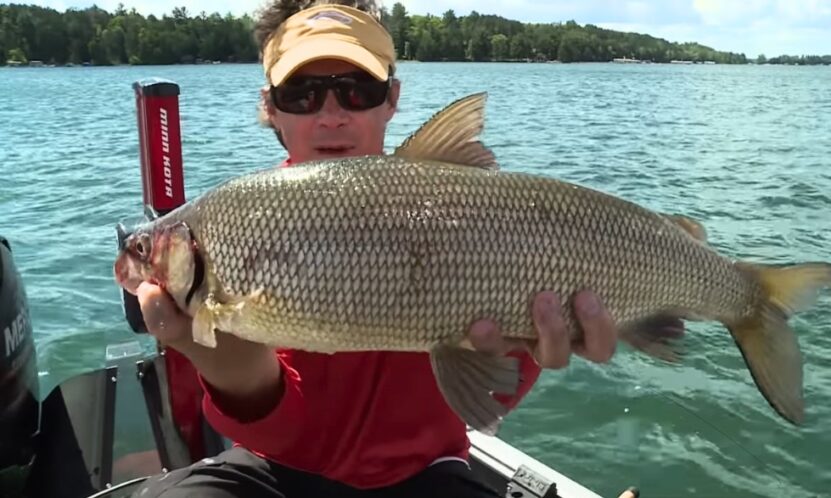
Whitefish, often referred to as Coregonus clupeaformis, is a freshwater fish found in the cold waters of the Northern United States and Canada. It’s revered for its mild, delicate flavor and low oil content, making it an excellent candidate for smoking. Whitefish is relatively lean, with a tender texture that beautifully absorbs the smoky flavors when properly cooked.
Its skin crisps up perfectly, while the flesh remains succulent and tender. This balance between the crispy skin and soft interior makes smoked whitefish a true delight for any food lover.
Why Choose It for Smoking?
Whitefish’s natural flavors are amplified when smoked. The smoking process imparts an in-depth, hearty taste, creating a unique combination that’s hard to resist. Moreover, whitefish fillets are easy to work with due to their size and consistency.
They hold up well during smoking without falling apart or becoming too dry, which can be a problem with some other types of fish. In essence, whitefish provides an excellent canvas for smoke, taking on its smoky essence while retaining its own delicate flavor.
Preparing Process
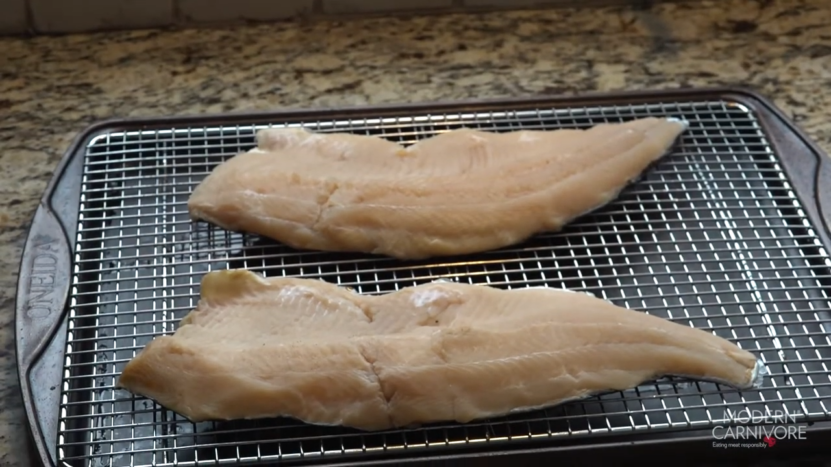
Preparation is a vital part of the smoking process. This is where you’ll clean, fillet, and brine your fish, getting it ready for the smokehouse.
Cleaning and Filleting
Handling your fish correctly is key to ensuring a successful smoke. Start by cleaning the fish, removing the scales, and gutting it. A sharp fillet knife will be your best friend in this step. Next, you’ll want to fillet your whitefish.
This involves separating the fish’s flesh from its bones, resulting in two fillets per fish. It’s an art in itself, but with some practice, it can be easily mastered. If this step seems too daunting, don’t hesitate to ask your fishmonger to do it for you.
Brining
Once the fish is clean and filleted, the next step is brining. Brining is essentially marinating the fish in a mixture of water, salt, sugar, and any other spices or herbs you’d like to incorporate. A basic brine recipe might include the following:
- 4 cups water
- 1 cup kosher salt
- 1/2 cup brown sugar
- Herbs and spices (such as bay leaves, peppercorns, and garlic)
Brining does two things: it adds flavor to the fish, and it helps to keep it moist during smoking. Aim for a brining time of at least 2 hours, but no longer than 12, to ensure your fish doesn’t become overly salty.
Smoking Your Whitefish
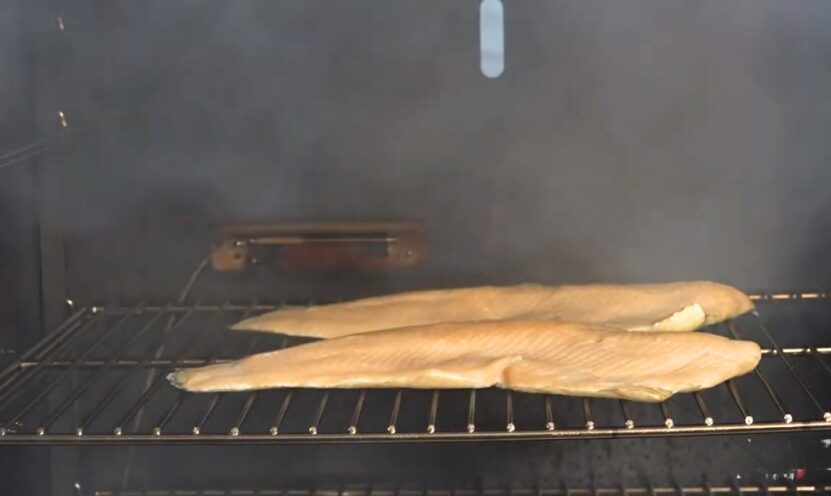
The smoking process is where the magic truly happens. It requires patience and a bit of technique, but the result is well worth the effort.
Choosing Your Wood
The type of wood you use can greatly impact the flavor of your smoked whitefish. Typically, you want to go for woods with a mild flavor, such as apple, alder, or cherry. These woods will impart a sweet, delicate smoke that will complement rather than overpower the flavor of the fish.
Avoid woods like mesquite or hickory, which can give your fish a bitter taste. Remember, the goal here is to enhance the whitefish’s natural flavor, not to mask it.
Mastering the Smoking Process
After your fish has been brined and your wood has been chosen, it’s time to smoke. Begin by preheating your smoker to a temperature of around 200°F (93°C). This low and slow approach will ensure that the fish is thoroughly cooked yet remains moist and flavorful.
Place the fish skin-side down on the smoker’s grate, close the lid, and let the magic happen. The smoking process can take anywhere from 2 to 4 hours, depending on the size of your fillets and the temperature of your smoker. Patience is key here, as rushing the process can result in dry or undercooked fish.
Remember to check the fish occasionally, but resist the temptation to open the smoker too frequently. Each time you open the lid, you’re releasing valuable heat and smoke, which can lengthen your cooking time and affect the end result.
Serving
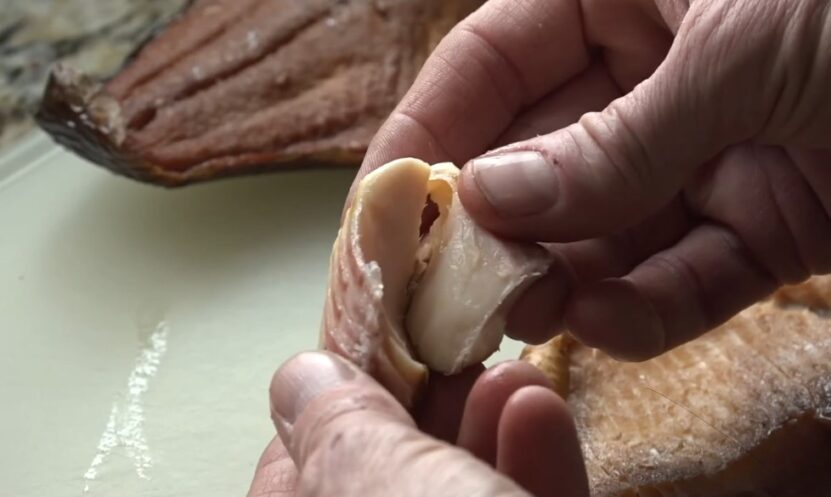
Finally, we get to the best part – enjoying your smoked whitefish. Here are some tips on how to serve and enjoy your smoky masterpiece.
How to Serve Smoked Whitefish
Smoked whitefish can be served hot, right off the smoker, or chilled for later use. It makes a great main course when served with some simple sides, such as grilled vegetables or a fresh salad. Alternatively, you can flake the fish and use it as a delicious, smoky ingredient in other dishes.
Smoked whitefish makes an excellent addition to pasta dishes, salads, and dips, or even as a filling for tacos or wraps. It can also be used to make a decadent smoked whitefish pâté, which is an absolute treat served on toasted bread or crackers.
Storing and Reheating
If you have any leftovers (which may not be the case given how delicious this dish is), smoked whitefish can be stored in the refrigerator for up to a week. Make sure to wrap it well in plastic wrap or aluminum foil to prevent it from drying out.
To reheat smoked whitefish, place it in a preheated oven at 275°F (135°C) until it’s warmed through. Avoid using a microwave to reheat smoked fish, as it can make the texture rubbery and unappealing.
FAQs
When is the best time to catch whitefish for smoking?
In the fall and early winter, whitefish move into the shallows to spawn. This is the best time to catch them, especially for dark house spearfishing.
What are the ingredients needed for smoking whitefish?
The ingredients for smoking whitefish include fillets of lake whitefish (skin-on), cool water, kosher salt, brown sugar, bay leaves, black peppercorns, onion salt, granulated garlic, soy sauce, and birch or maple syrup (optional for basting during smoking).
Why is brining important in the smoking process?
Brining the fish before smoking is important as it removes some of the moisture and also infuses some nice flavors into the flesh. The brining process can range from 4 to 48 hours, but it’s recommended to bring somewhere between 12 and 24 hours in the refrigerator.
What is the purpose of drying the fish before smoking?
Drying the fish after brining is key to forming the pellicle, a skin that forms on the flesh of the fish when dried. This is important in smoking because it allows the smoke to attach itself to the fish and gives it a wonderful smoky flavor.
What temperature should the fish be smoked at?
The fish should be smoked at a low heat, ideally between 180 – 220 degrees Fahrenheit. The goal is to get the internal temperature of the whitefish to 160 degrees Fahrenheit and hold it at that temperature for 30 minutes.
What type of smoker and wood should be used for smoking whitefish?
The choice of smoker and wood comes down to personal preference. However, milder woods like apple or pecan are often preferred for fish over stronger ones like mesquite or hickory.
How long can smoked whitefish be stored?
Smoked whitefish can be stored in the fridge for up to a week if sealed in tinfoil. It can last longer if vacuum-sealed. However, it is recommended to avoid freezing smoked fish.
Final Words
Smoking whitefish at home can seem like a daunting task, but with some patience and a bit of technique, you can create a culinary masterpiece that will transport your senses to the tranquil shores of a Northern lake.
